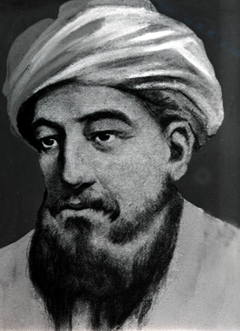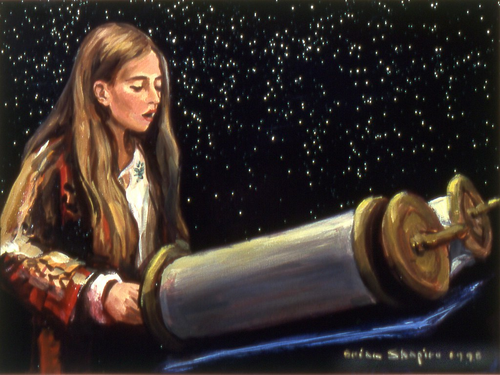Shavuot, Revelation & Pride Month
06/28/2022 09:59:01 AM
I’m looking forward to hearing your thoughts about the ideas and thinkers that accompanied me on this walk. If you’d like more information, click on the hyperlinks.
 I recently returned from a couple days of fishing in Oregon. On the way home, I stopped in Calistoga and hiked up the old Oat Mine Trail which goes up into the Palisades. Heading up the trail, I began to ponder the coming week. The Shabbat service, upcoming B Mitzvahs, Pride Month, and Shavuot. I do a lot of sermon writing when I go for walks.
I recently returned from a couple days of fishing in Oregon. On the way home, I stopped in Calistoga and hiked up the old Oat Mine Trail which goes up into the Palisades. Heading up the trail, I began to ponder the coming week. The Shabbat service, upcoming B Mitzvahs, Pride Month, and Shavuot. I do a lot of sermon writing when I go for walks.
As I'm walking up the trail, a question comes to mind. How can the Infinite communicate with the finite? Remember, Shavuot is about revelation, the giving of the Torah. How can the Infinite, God, communicate with human beings, who are finite? I’m thinking, “What does that look like? How does it work?“ In the Torah, it often goes something like this: “And God spoke to Moses saying.…” Is that possible, the Infinite “speaking” to the finite? That’s the first thing that comes to mind. And then next, an image of the Sistine Chapel, the ceiling, and the picture of the two fingers, God’s and Moses', the Infinite and the finite, reaching out to each other, but never touching. How can the Infinite communicate with the finite?
That image dissipates and is replaced with the story of Pardes. Pardes means orchard in Hebrew but is also code for mystical union with the Divine. The story of Pardes goes like this:
Four famous Talmudic rabbis enter Pardes as they experience mystical union with God. (The Talmud does not tell how they got there: through prayer, through meditation, through some type of hallucinogen?) One of the rabbis dies on the spot, another loses his mind, a third abandons religious life. In the wake of Divine union, only one, Rabbi Akiva, comes out alive.
How can the Infinite communicate with the finite?
As I continue, my thoughts turn to Exodus 33. which describes the incident of the golden calf, when the Israelites, waiting for Moses to come down from Mt. Sinai, give up on God and turn to an idol instead. Moses begs God for the chance to see the Divine, to know God. And this is God’s response: “I will cause all of my goodness to pass in front of you, but you cannot see my face, for no one can see me and live.” How can the Infinite communicate with the finite?
 I’m still walking up the Oat Mine Trail, lost in thought, when the great medieval rationalist Rabbi Moses Maimonides enters my consciousness. Maimonides believed that revelation was accessible through observation and contemplation of the natural world, what we would call science. He described prophecy as flashes of lightning where, for a moment, the Divine structure of the universe is illuminated. He suggested that a perfected human could walk in the Divine light continuously. He may have thought he himself was such a person.
I’m still walking up the Oat Mine Trail, lost in thought, when the great medieval rationalist Rabbi Moses Maimonides enters my consciousness. Maimonides believed that revelation was accessible through observation and contemplation of the natural world, what we would call science. He described prophecy as flashes of lightning where, for a moment, the Divine structure of the universe is illuminated. He suggested that a perfected human could walk in the Divine light continuously. He may have thought he himself was such a person.
I am still walking uphill when the mystics, Kabbalists, come marching in. They never liked Maimonides very much. What about bitul hayesh, nullification of the self, they say? This idea comes up in certain forms of Jewish meditation when one tries to empty the mind, really let go of the ego, lose oneself in order to create space to merge with the Divine. Then I’m reminded of the Lurianic mystical story of creation which is the basis for the notion of Tikkun Olam. That story goes like this:
In the beginning there was just God. There was no room for anything else. God had to withdraw or contract (tzimtzum) to create space in which another reality could shine. In that space, God poured supernal light into kelim, material vessels which, unable to contain this Divine radiance, exploded, creating the world in a divine “Big Bang” and imbedding shards of holiness throughout creation.
How can the Infinite communicate with the finite?
Meanwhile, I'm still walking. It’s 95 degrees, no shade. I’m  now hiking through a fire zone and I'm noticing the woodpeckers making their way through the burnt wood. My attention shifts to the behavior and movement of the birds -- another, wordless form of revelation -- when I recall the Hasidic teaching that the only thing that God uttered at Mt. Sinai was the letter aleph which is a silent letter. How does the Infinite communicate with the finite?
now hiking through a fire zone and I'm noticing the woodpeckers making their way through the burnt wood. My attention shifts to the behavior and movement of the birds -- another, wordless form of revelation -- when I recall the Hasidic teaching that the only thing that God uttered at Mt. Sinai was the letter aleph which is a silent letter. How does the Infinite communicate with the finite?
 And as I reach a mental intersection -- thinking about Shavuot and Divine revelation and simultaneously thinking about our upcoming Pride Month Shabbat celebration -- I stumble into the problem of how something called revelation can be so abused in the world. I am reminded of how the Bible—one of the most widely adopted source of answers to the question of how the Infinite communicates with the finite -- is used as a cudgel to bludgeon vulnerable people, including those of us who are LGBTQ and our LGBTQ friends and family. Just then, while I'm contemplating that dark edge of revelation, I am reminded of the great early 20th century Jewish philosopher Martin Buber who envisioned God as revealed in the space between people whenever each sees the other as a spark of Divinity. And through Buber’s “I” and “Thou,” I connected to Emmanuel Levinas, the mid-20th century French philosopher who suggested the notion of “the revelation of the face.” “You cannot murder a face,” he quipped. The Infinite for him is only meaningful, only safe, when grounded in the human. God is one’s response to the other, another human being, which is Infinite, which is Divine.
And as I reach a mental intersection -- thinking about Shavuot and Divine revelation and simultaneously thinking about our upcoming Pride Month Shabbat celebration -- I stumble into the problem of how something called revelation can be so abused in the world. I am reminded of how the Bible—one of the most widely adopted source of answers to the question of how the Infinite communicates with the finite -- is used as a cudgel to bludgeon vulnerable people, including those of us who are LGBTQ and our LGBTQ friends and family. Just then, while I'm contemplating that dark edge of revelation, I am reminded of the great early 20th century Jewish philosopher Martin Buber who envisioned God as revealed in the space between people whenever each sees the other as a spark of Divinity. And through Buber’s “I” and “Thou,” I connected to Emmanuel Levinas, the mid-20th century French philosopher who suggested the notion of “the revelation of the face.” “You cannot murder a face,” he quipped. The Infinite for him is only meaningful, only safe, when grounded in the human. God is one’s response to the other, another human being, which is Infinite, which is Divine.
 I'm tired now, but I've walked a long way, all uphill, and sweat is dripping off the brim of my hat and soaking my shirt. I’ve walked with mystics and rationalists, considered the written Torah and the torah that shines in human connection. I head down the trail with this last thought: Only revelation grounded in humanity has a chance of respecting, loving, and elevating the varied, beautiful and diverse ways we humans reveal ourselves in the world.
I'm tired now, but I've walked a long way, all uphill, and sweat is dripping off the brim of my hat and soaking my shirt. I’ve walked with mystics and rationalists, considered the written Torah and the torah that shines in human connection. I head down the trail with this last thought: Only revelation grounded in humanity has a chance of respecting, loving, and elevating the varied, beautiful and diverse ways we humans reveal ourselves in the world.

